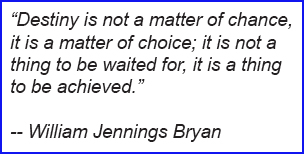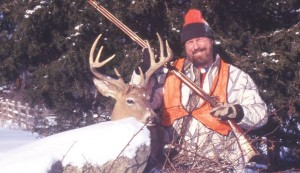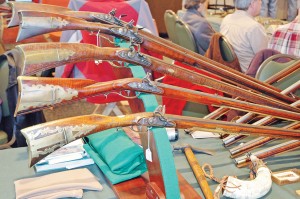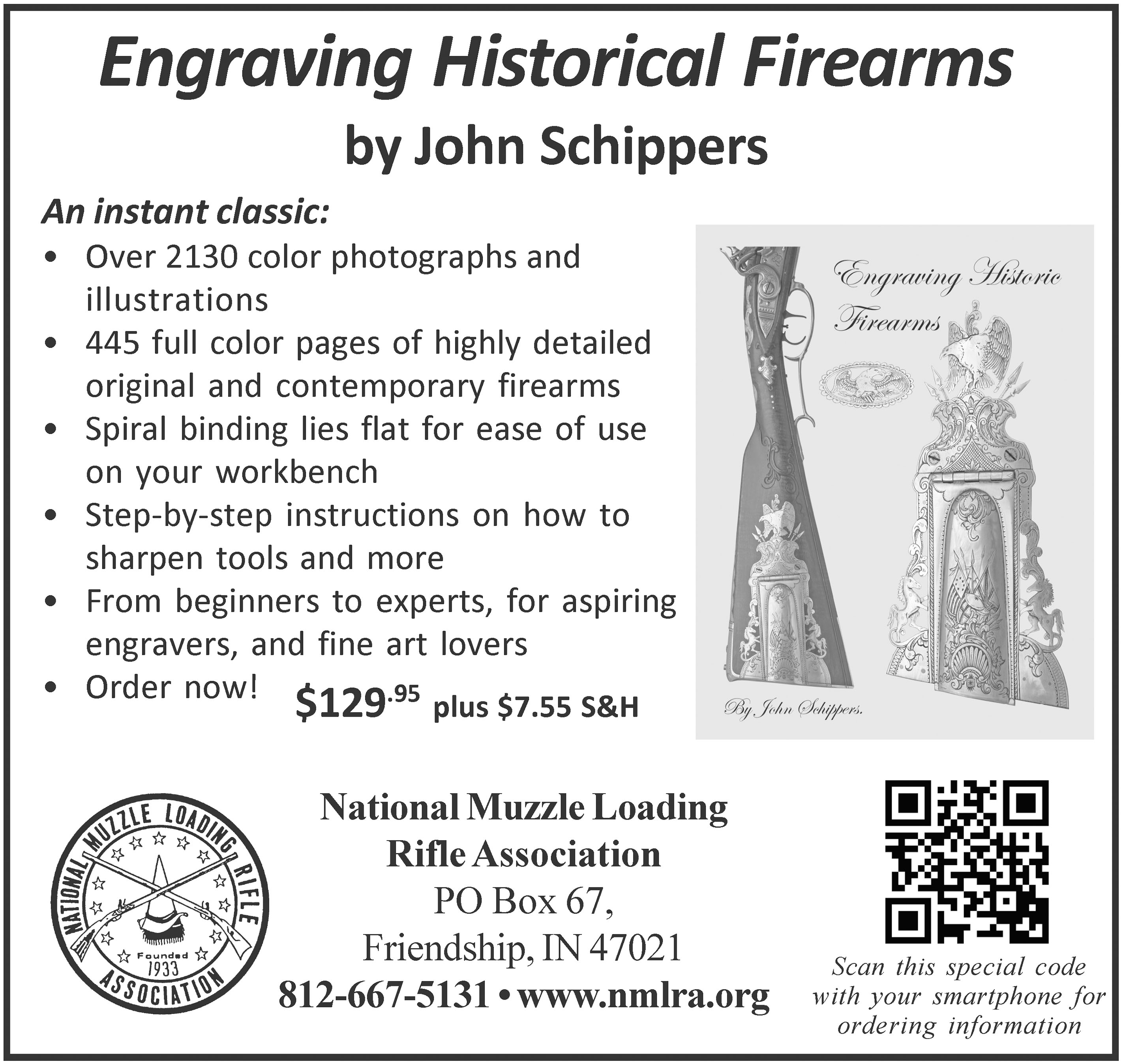by James C. Fulmer | Past President, NMLRA
Those words ring true when you start talking about the rebirth of muzzleloading. It started out simple enough – a few people getting together to shoot the old time muzzleloaders. It began in earnest during the depression in the 1930s. That is when many old, original guns, from flintlock to percussion, were brought out of storage to be sold and traded to help make a few extra dollars. This sparked a new interest in these old firearms from collectors to shooters.
With the establishment of the National  Muzzle Loading Rifle Association in 1933, there became a need for replacement parts, percussion caps, flints, black powder, and everything to make these old weapons work. The muzzleloading sport was growing. Wes Kindig would start a shop in 1940 that would become the Log Cabin Shop, Val Forgett would start the Navy Arms Company, and Turner Kirkland would start Dixie Gun Works. By the end of the 1950s, all of them were up and coming muzzleloading supply houses.
Muzzle Loading Rifle Association in 1933, there became a need for replacement parts, percussion caps, flints, black powder, and everything to make these old weapons work. The muzzleloading sport was growing. Wes Kindig would start a shop in 1940 that would become the Log Cabin Shop, Val Forgett would start the Navy Arms Company, and Turner Kirkland would start Dixie Gun Works. By the end of the 1950s, all of them were up and coming muzzleloading supply houses.
In 1963, the Centennial of the American Civil War brought more people into the sport. Reproduction firearms where being made and prices of original Civil War muskets were going out of sight. The Civil War was too recent for some and a group of men formed the Brigade of the American Revolution in 1962 to reenact the life and times of the American Revolution. By the time of the Bi-Centennial for the American Revolution had started in 1975, black powder fever was going full blast. It seems like everybody knew somebody who did reenactments, rendezvoused, or shot targets with a muzzleloader. Muzzleloading had a wild meteoric rise in popularity from the 1930s to the 1970s. The first 40 years of the rebirth of muzzleloading would set the stage for the next 40 years.
When it came to hunting with muzzleloaders in Pennsylvania in the 1970s, we had been making and hunting with flintlock muzzleloading firearms long before the United States existed. So when the Pennsylvania Game Commission held its first muzzleloader season in 1974, it wasn’t a surprise. What did surprise many people is that it would be flintlock only.
The word had gotten out in 1973 that there was going to be a muzzleloading hunting season for deer in Pennsylvania. I had a reputation for being the kid who shot and worked on muzzleloaders. Many people started bringing any old muzzleloader they had in the barn or attic to me to be cleaned, repaired, and have new nipples put in and get some instruction on how to make it go bang. When the game rules came out as flintlock only, all those percussion guns I had repaired had to be put back in safe keeping. I wish I had some of those original 1842 .69 caliber smoothbore Springfield muskets that showed up at my Dad’s farm!
It would be flintlock only in 1974 and that first season there would be only be 65 deer harvested, including four bucks. The hunt was held for only three days on 37 state game lands. It would be 1979 before the flintlock deer season would go state-wide. The reported deer harvest that year was 2,459, which was a new record.
It was October, 2002 before you would be allowed to hunt whitetails with any type of muzzleloader — including inline, scoped muzzleloaders. By that time almost every state had a muzzleloading deer season.
This last deer season, Pennsylvania celebrated its 40th anniversary of having a muzzleloading flintlock deer season. I wish I could say I shot 40 deer during those years, but I can say I hunted all 40 years. Maybe I didn’t hunt as much as I wanted — but I did hunt. I hunted with all types of flintlocks — from short barrel half stocks to heavy military flintlock muskets, but my favorite remains the Pennsylvania long rifle.
Pennsylvania is the birthplace of the flintlock long rifle. If you visit the state capital in Harrisburg in the State House of Representatives you will see a painting of Daniel Boone holding the legendary long rifle. For many years, many groups and organizations touted the uniqueness of the Pennsylvania long rifle trying to get it the recognition it deserves. Nobody worked any harder to promote the Pennsylvania long rifle to be Pennsylvania state firearm symbol than the Jacobsburg Historical Society. Finally, with the hard work of State Representative Marcia Hahn of the 183rd District and many others, ACT 73 declared the Pennsylvania long rifle as the Pennsylvania state firearm symbol. It started as House Bill 1989 which passed through House on June 4, 2014, then unanimously through the Senate on June 17th, and it was finally signed on November 17th by then Governor Tom Corbett.
Some of the text that was in HB 1989 isn’t written for just Pennsylvanians, but for all Americans:
“Pennsylvania’s gun making traditions has played an important role in the development of the United States of America. During Pennsylvania’s early history, settlers placed chief reliance on their rifles for sustenance, security, and survival.
“The Pennsylvania long rifle, a unique firearm that was different in principle and outline from any other weapon in the world, was developed by skilled gunsmiths in Moravian communities of Christian’s Spring, Northampton County, as well as by artistic rifle maker Martin Meylin, on Willow Street, in Lancaster County.
“The Pennsylvania long rifle was the first truly American firearm and, due to its exceptional accuracy and range, was considered the greatest achievement in the development of firearms during the 18th century. Playing an important role in the early years of the industrial revolution in Pennsylvania and New England, the Pennsylvania long rifle was instrumental in the American fur trade and was carried west and south by frontiersmen as they set out to expand the boundaries of the nation.
“The Pennsylvania long rifle has been lauded for its beauty and craftsmanship, as well as the ingenuity of the skilled gunsmiths who crafted it. The color combinations, carvings, engravings, and graceful slenderness of the Pennsylvania long rifle cause it to stand alone and remain unchallenged as a primary example of early American art.
“Future generations deserve the right to appreciate the heritage of this long-barreled rifle, born to artistic gunsmiths in the communities of the Commonwealth of Pennsylvania.”
What will the next 40 years bring to our muzzleloading sport? The first 40 years, the muzzleloading sport was built; the next 40 years it grew; and I believe the last paragraph of HB 1989 says it all — it needs to be preserved. Sign a friend up to the National Muzzle Loading Rifle Association now and help to preserve our American heritage!







